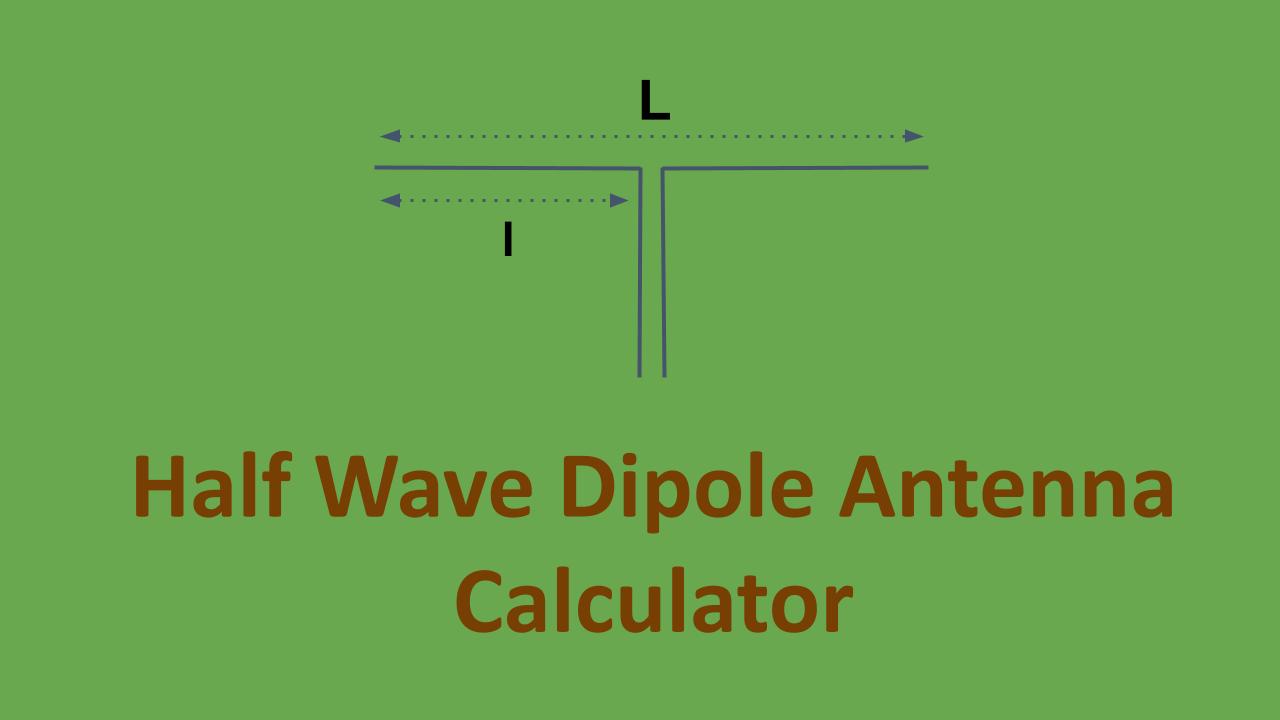This tool calculates the length of a half wave dipole antenna
Calculator
Enter the Operating Frequency
The tool will compute the antenna length (L)
Use the drop down menu to select the units for both input and output
Example Calculations
To calculate the dimensions of a dipole antenna that operates at a certain frequency or wavelength.
If the frequency is specified then it can be entered directly into the calculator above. For example, at a frequency of operation equal to 2450 MHz, the half wave dipole length (L) is 2.29 inches or 0.058 meters.
Formula
The total length (L) of the dipole antenna in feet is calculated as:
L = 468 / f
where f is the frequency in MHz.
A dipole antenna is comprised of two arms of equal length
l = L/2
Background
What Is a Half-Wave Dipole Antenna?
A half-wave dipole antenna is an antenna with a total length that is half the wavelength of the frequency it is designed to transmit or receive. The antenna consists of two straight conductive elements (or “legs”), with each leg being one-quarter of a wavelength long. The total length of the antenna is therefore half of the wavelength of the desired operating frequency.
For example, if you’re working with a frequency of 14 MHz, the half-wave dipole would be designed so that its total length corresponds to half the wavelength of that frequency.
Key Features of a Half-Wave Dipole:
- Simple design: It consists of two conductive elements, usually made from wire or metal rods.
- Effective performance: A half-wave dipole is efficient and provides good performance in terms of transmitting and receiving signals, especially in the HF (High Frequency) range.
- Resonant at one frequency: A half-wave dipole is most effective when resonant at the desired operating frequency, meaning it is cut to a specific length to match that frequency.
Why Use a Half-Wave Dipole Calculator?
The key to building an effective half-wave dipole antenna is calculating its proper length based on the frequency you intend to use. Since wavelength depends on frequency, the antenna’s length needs to match half the wavelength of the signal it’s meant to handle.
A half-wave dipole calculator simplifies the process by allowing you to input your desired frequency and instantly determine the optimal length of the antenna. Without this calculation, your antenna may be ineffective or suffer from poor signal transmission and reception.
Related Posts
- Calculate the gap between two elements of the half wave dipole
- Dipole antenna calculator (select the wavelength)
- FM Antenna Length calculator
